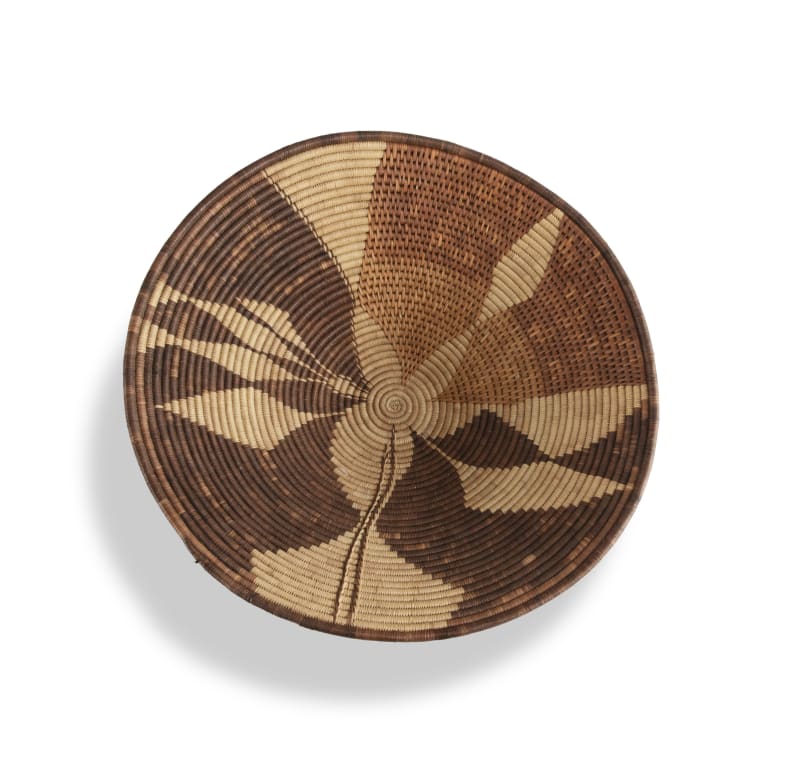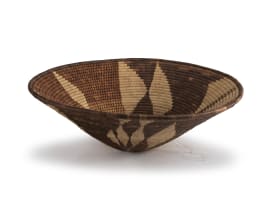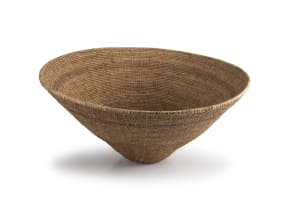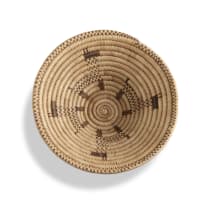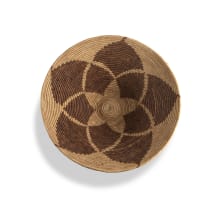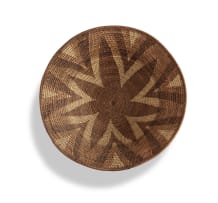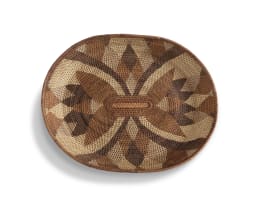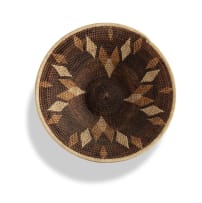Large Yei carrying and winnowing coiled basket, 1989
Orapeleng Mphenyemang
About the SessionThis selection of vintage baskets comes from the collection of Dr.Elizabeth Terry, a social scientist with a special interest in craft development. It marks a historic moment, being the first time a collection of this kind has come to market. Originating from Southern and Central Africa, these baskets demonstrate how everyday objects—once used for practical purposes like storing food, sifting grain, and carrying goods—transform over time into cultural artifacts and works of art.
Incl. Buyer's Premium & VAT
About this Item
Notes
Orapeleng Mphenyemang was born in Danega and has lived there all of her life. She learned how to weave by watching her mother, and knows how to make open bowl-shaped baskets, closed-lidded baskets and bracelets. She often buys the mokola palm strips, but goes out deep into the Okavango Delta about once a month to collect the dye materials; always being on the lookout for snakes and crocodiles. Over the years, Mphenyemang's baskets have been entered in the annual basket competitions, sponsored by the Botswanacraft Marketing Company and held at the Botswana National Museum and Art Gallery. This basket achieved first place in 1990.
Besides being abstract, what makes this Yei basket so unusual and interesting is that two types of coiling techniques are used, each over large surfaces. This combination would typically be done using a close simple coil wrap topped with just a line or two of coiling over two rows. Here, almost a third of the basket (red-brown colour) is woven with a different technique (coiling over two rows, while alternating rows for each stitch). This takes a great deal of skill, patience and precision to end up with a tight smooth result. An additional design element is created by a third coiling technique - deliberately splitting stitches in the previous row to create two thin lines that appear to float over the surface. The dark brown colour is obtained by boiling the palm leaves with the bark of the Euclea divinorum tree roots. The red-brown colour is produced when the palm leaves are boiled with Berchemia discolor tree bark, while the lighter shades come from a second weaker dye bath using the same Berchemia bark again.
When asked if the baskets that she and other women make contribute to the culture of the Yei, Mphenyemang replied, "History tells us that our ancestors used these baskets for serving food and as storage containers. Like our ancestors, we are using the baskets, but we are also selling them to make a living. Most people all over the nation and outside cannot make baskets, so they are very interested in ours. In this way, others learn about our culture".
- Dr Elizabeth Terry
Provenance
Dr Elizabeth Terry Collection.
View all Orapeleng Mphenyemang lots for sale in this auction
